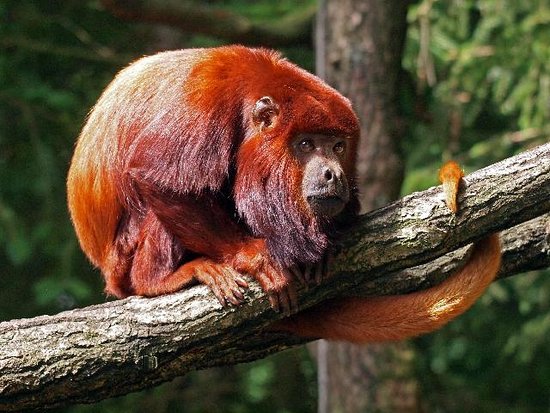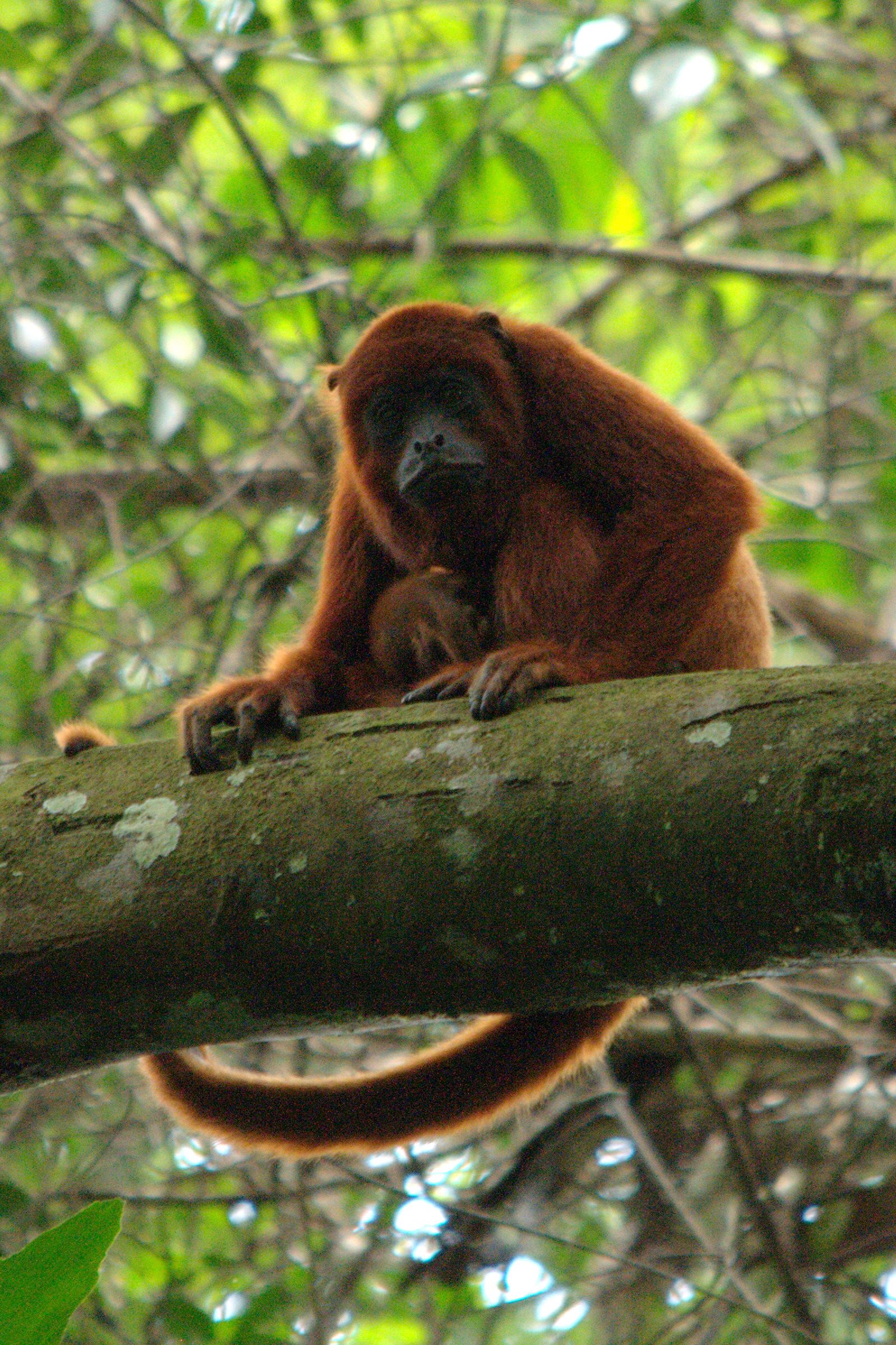General information
- Genus: Alouatta
- Species: Seniculus
- Also known as: Red Howling Monkey
- Subspecies of Red Howler Monkey: A. s. seniculus, A. s. arctoidea, A. s. stramineus, A. s. macconnelli, A. s. insulanus, A. s. amazonica, A. s. juara, A. s. puruensis and A. s. sara
- Average length: Females 46 – 57 cm (1.5 – 1.9 ft.), males 49 – 72 cm (1.6 – 2.5 ft.) + tail of 49 – 75 cm (1.6 – 2.5 in.)
- Adult weight: Females up to 6.3 kg (14 lb.), males up to 7.5 kg (17 lb.)
- Diet: Primarily young leaves, sometimes ripe fruits, flowers, termites and soil from claylicks
- Natural predators: Harpy Eagles. Strong evidence of jaguars and potentially pumas, foxes, ocelots, spectacled caimans and boa constrictor snakes.
- Life span in the wild: 25 years
- Litter size: One
- Natural habitat: Vary varied: primary lowland rainforest, dry deciduous forest, Andean cloud forest (including oak forest), gallery forest in the eastern plains of Colombia, mangrove swamps, and várzea forest. Up to 3,200 m (10,500 ft.).
- Geographical range: From Columbia to Peru and from Ecuador to western Brazil.
Interesting Red Howler Monkey facts
- Howler Monkeys are the loudest animals in the Americas and possibly the world. Their howls, mostly by the males, are made to alert other possible Howler Monkey groups, who will respond, of their location. They do this to avoid energy-consuming confrontations between groups.
- There is only one dominant adult male in each Red Howler Monkey group, which can be of 3 – 10 individuals.
- Once a male reaches sexual maturity, he is expelled from the group and looks for another group to dominate. He will attack and if necessary kill the dominant male in the new group to achieve this and then kill all his offspring to ensure that any new babies are his own.
- Because of their low-energy leaf-based (“folivorous”) diet and their difficulties to digest, Red Howler Monkeys can spend over 15 hours a day sleeping or resting.
- Female Red Howler Monkeys seduce males by moving their tongues in a rhythmic way. If successful, he will respond the same way – if not, she will try with another male.
- Mothers carry their baby wrapped around their bellies for about 30 days. After this, the baby will spend about a year clung to her back.
- Like many other monkey species in the Amazon, the Red Howler Monkey has a long “prehensile” tail – a tail adapted to be able to grasp things. It uses it to hang from tree branches.
IUCN conservation assessment
- Estimated world population: Unknown
- Conservation status: Least Concern
- Population trend: Decreasing
Sources
- Animal Diversity Web, Museum of Zoology – University of Michigan
- Boubli, J.-P., Di Fiore, A., Rylands, A.B. & Mittermeier, R.A. 2008. Alouatta seniculus. In: IUCN 2012. IUCN Red List of Threatened Species. Version 2012.2. Downloaded on 24 May 2013.

Red Howler Monkey in Tambopata

Red Howler Monkey looking from a tree in Tambopata
